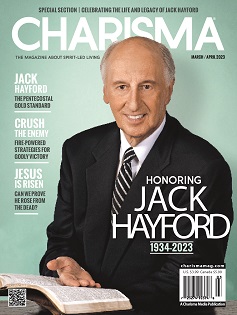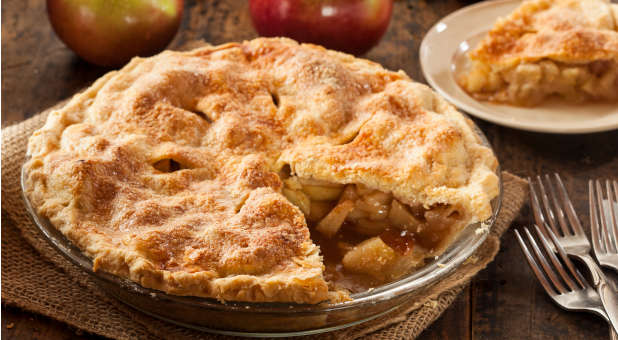Why the Asbury Revival Is as American as Baseball and Apple Pie
The Asbury Revival, characterized by spontaneous and extended times of prayer and worship by students of Asbury University, and thousands of visitors to their campus, may seem strange to those whose Christianity is characterized by ritual and structured formality. However, there is nothing strange or weird about the Asbury Revival.
It is, in fact, as American as baseball and apple pie.
Such religious awakenings have been an integral part of the American experience from the nation’s inception. For example, the Pilgrims and other early immigrants to these shores came seeking a reformation of Christianity. In contrast to the cold, formalized orthodoxy of the state churches of Europe, they took the New Testament as their guide and preached a warm and personal faith that could be both known in the head and experienced in the heart.
After a time of spiritual backsliding by the children and grandchildren of those early immigrants, a Christian revival erupted in the 18th century that transformed colonial America. When, for example, 24-year-old George Whitefield, a Methodist evangelist from Great Britain, preached from the courthouse steps in Philadelphia, it seemed the entire city turned out to hear him.
Benjamin Franklin, who became a close friend of Whitefield and printed and distributed his sermons, described the remarkable change that came over his hometown. He wrote:
“The multitudes of all sects and denominations that attended his sermons were enormous. It was wonderful to see the change soon made in the manners of our inhabitants. From being thoughtless or indifferent about religion, it seemed as if all the world were growing religious so that one could not walk through the town in an evening without hearing psalms sung in different families of every street” (Hyatt, “1726: The Year that Defined America,” 79).
The same sort of revival erupted further north in New England. Jonathan Edwards, pastor of the Congregational Church in Northampton, wrote that, “the town seemed to be full of the presence of God.” He said the Spirit of God worked so powerfully that, “there was scarcely a single person in the town, old or young, left unconcerned about, the great things of the eternal world” (Hyatt, “America’s Revival Heritage” 2nd Edition, 42).
The revival seemed to spring up spontaneously and transform community after community. It was also spread by evangelists, such as Whitefield, who travelled up and down the eastern seaboard preaching that church membership would not save anyone, but we must be born again according to the words of Jesus in John 3:3. Everywhere they went the masses turned out to hear their Christ-centered message.
When, for example, Nathan Cole, a farmer in Massachusetts, heard that Whitefield would be preaching 12 miles away in Middletown later that same morning, he dropped his tools, called his wife, saddled their horse and headed for Middletown. As they approached the main road to Middletown, they saw a large cloud of dust in the air and then heard the thundering sound of hoofbeats.
The word had rapidly spread and the entire region, it seemed, was headed for Middletown to hear Whitfield preach. Cole later wrote, “The land and banks over the river looked black with people and horses all along the 12 miles. I saw no man at work in his field, but all seemed to be gone.” Cole was not disappointed and wrote,
“And my hearing him preach gave me a heart wound. By God’s blessings, my old foundation was broken up, and I saw that my righteousness would not save me” (Hyatt, “1726:The Year that Defined America,” 79).
This “Great Awakening,” as it came to be called, also impacted colleges, including one where many of America’s founders received their training. In a letter dated April 16, 1757, Samuel Finley, a trustee of the College of New Jersey, now Princeton University, wrote:
“Our glorious Redeemer has poured out His Holy Spirit upon the students at our College. The whole house was a Bochim (place of weeping). Mr. William Tennant, who was on the spot, says that there never was, he believes, more genuine sorrow for sin and longing after Jesus” (Hyatt, “America’s Revival Heritage” 2nd Edition, 81).
Among those who received their training at this college were 37 who became judges (three of whom served on the Supreme Court); 12 members of the Continental Congress; 28 senators; 49 congressmen; and James Madison, America’s 4th president and chief architect of the U.S. Constitution.
This First Great Awakening was the first national event experienced by the 13 divided colonies. Regional and cultural barriers were breached and for the first time they began to see themselves as one people—”one nation under God” as Whitefield had prayed and proclaimed. It was for this reason that the late Harvard professor, Perry Miller, said, “The Declaration of Independence of 1776 was a direct result of the preaching of the evangelists of the Great Awakening” (Hyatt, “1726: The Year that Defined America,” 67).
Christian revival seemed to have been imprinted in our national DNA, for in addition to countless local and regional revivals, America has experienced at least three subsequent Great Awakenings that have come at critical times in the life of the nation.
The Second Great Awakening renewed the faith of the nation and saved her from the negative, atheistic influences of the French Revolution. The Third Great Awakening, also called the Great Prayer Awakening of 1857-58, unleashed the spiritual and moral forces that carried the the nation through a Civil War. The Fourth Great Awakening—the Jesus Revival and Charismatic Renewal—saved the nation from the social and racial turmoil of the 1960s-70s.
 Many are asking, “Will the Asbury Revival lead to another to another Great Awakening that will alter the course of the nation once again?” That remains to be seen, but one thing is certain. There is nothing weird or strange about the Asbury Revival. It is as American as baseball, hot dogs and apple pie. {eoa}
Many are asking, “Will the Asbury Revival lead to another to another Great Awakening that will alter the course of the nation once again?” That remains to be seen, but one thing is certain. There is nothing weird or strange about the Asbury Revival. It is as American as baseball, hot dogs and apple pie. {eoa}
Bring Charisma magazine home with a subscription today!
This article was derived from “America’s Revival Heritage“ and “1726: The Year that Defined America“ by Dr. Eddie L. Hyatt and available from Amazon and his website at http://eddiehyatt.com.
For the original article, visit biblicalawakening.blogspot.com.














































